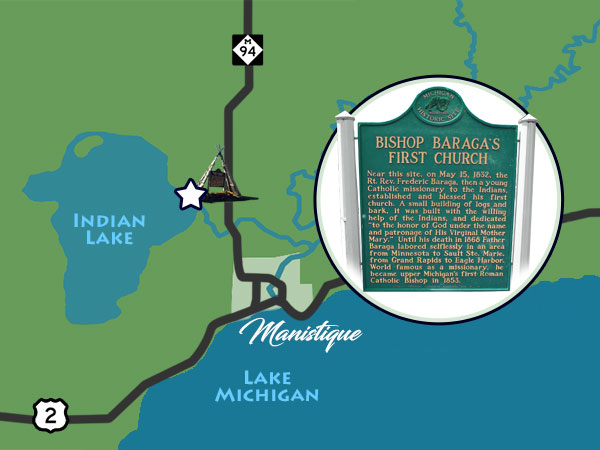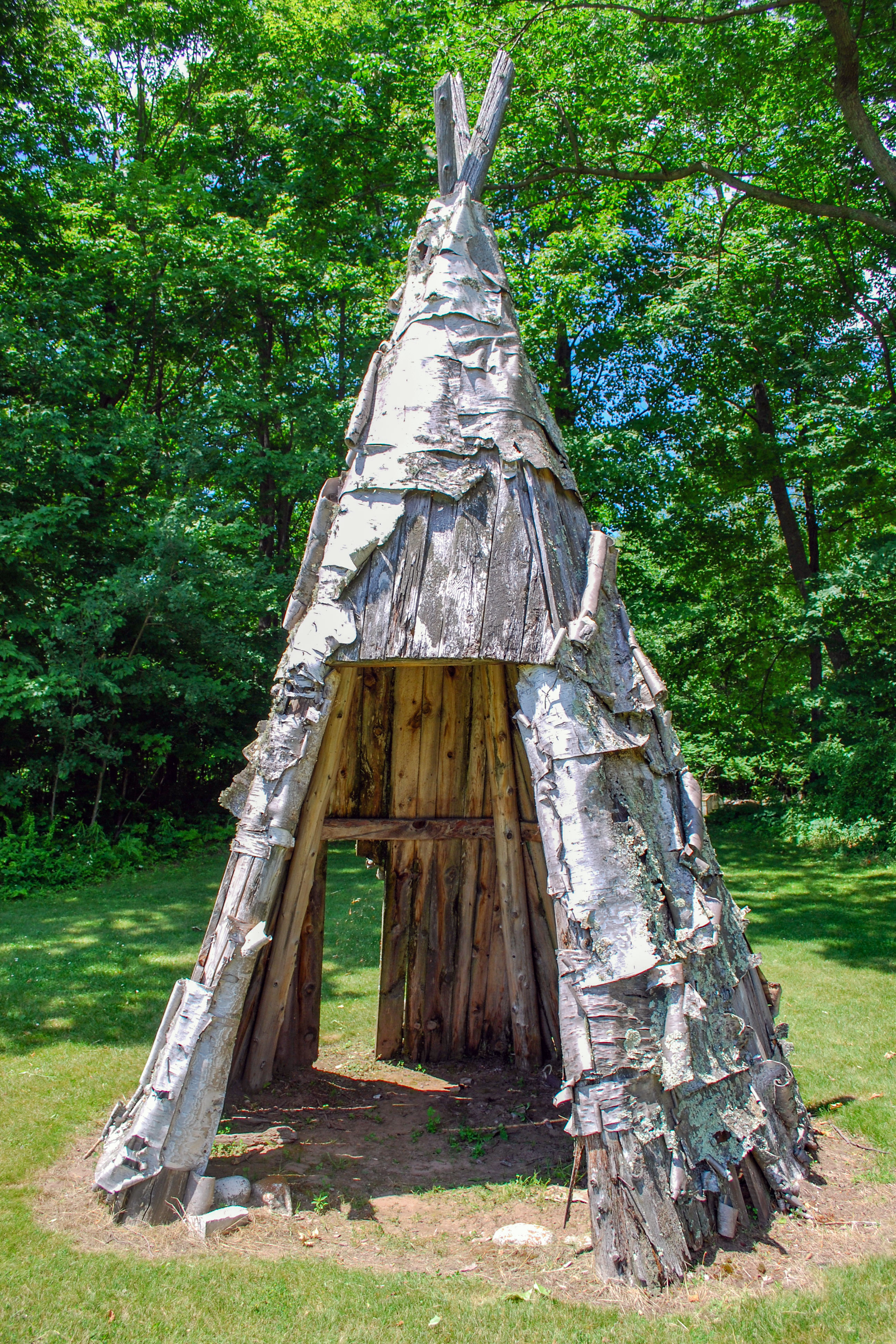During his lifetime, Baraga founded many missions in northern Michigan. The original Indian Lake mission, the third of Baraga's faith, was built in anticipation of his first visit to the area in May of 1832.

Bishop Baraga Shrine
Michigan Registered Site - Historical Marker #S146
Indian Lake Shoreline (corner of Birch Street and Arrowhead Road)
Manistique, Michigan
Bishop Baraga’s first Upper Peninsula mission, reconstructed on its original site on the east shore of Indian Lake near Manistique, MI. Baraga arrived here in 1832, paddling from Cross Village with his native escorts and guides. He found the local natives already building a church; he baptized 31 of them that summer. They built a larger church in 1833. For many years the site included an Indian burial ground with the remains of chief Ossawinamakee, one of his sons, and others. Spirit houses of various sizes and shapes over each grave survived into the 20th Century. A totem stick identified each deceased. The chief’s son Semo maintained the site before removing to Nahma, where he is buried. The chapel, built by local Chippewas, used traditional Indian construction methods and materials such as logs and bark. The Bishop Baraga Shrine near Indian Lake includes a chapel, Indian dwellings, and buildings open to the public.
Bishop Baraga's First Church
Michigan Registered Historic Site
Near this site, on May 15, 1932, the Rt. Rev. Frederic Baraga, then a young Catholic missionary to the Indians, established and blessed his first church. A small building of logs and bark, it was built with the willing help of the Indians, and dedicated "to the honor of God under the name and patronage of His Virginal Mother Mary." Until his death in 1868 Father Baraga labored selflessly in an area from Minnesota to Sault Ste. Marie, from Grand Rapids to Eagle harbor. World famous as a missionary, he became upper Michigan's first Roman Catholic Bishop in 1853.



.jpg)
.jpg)





.jpg)

